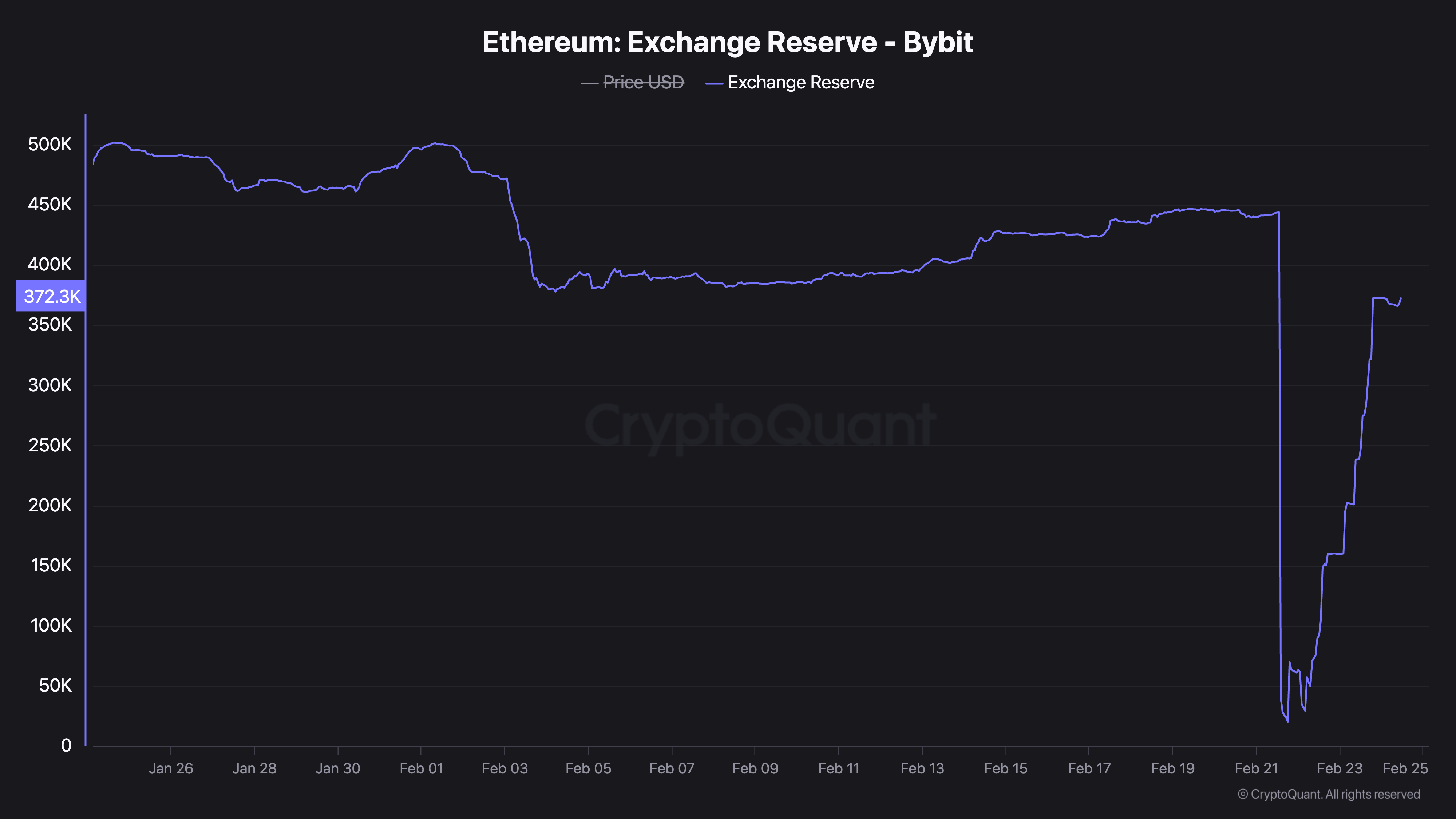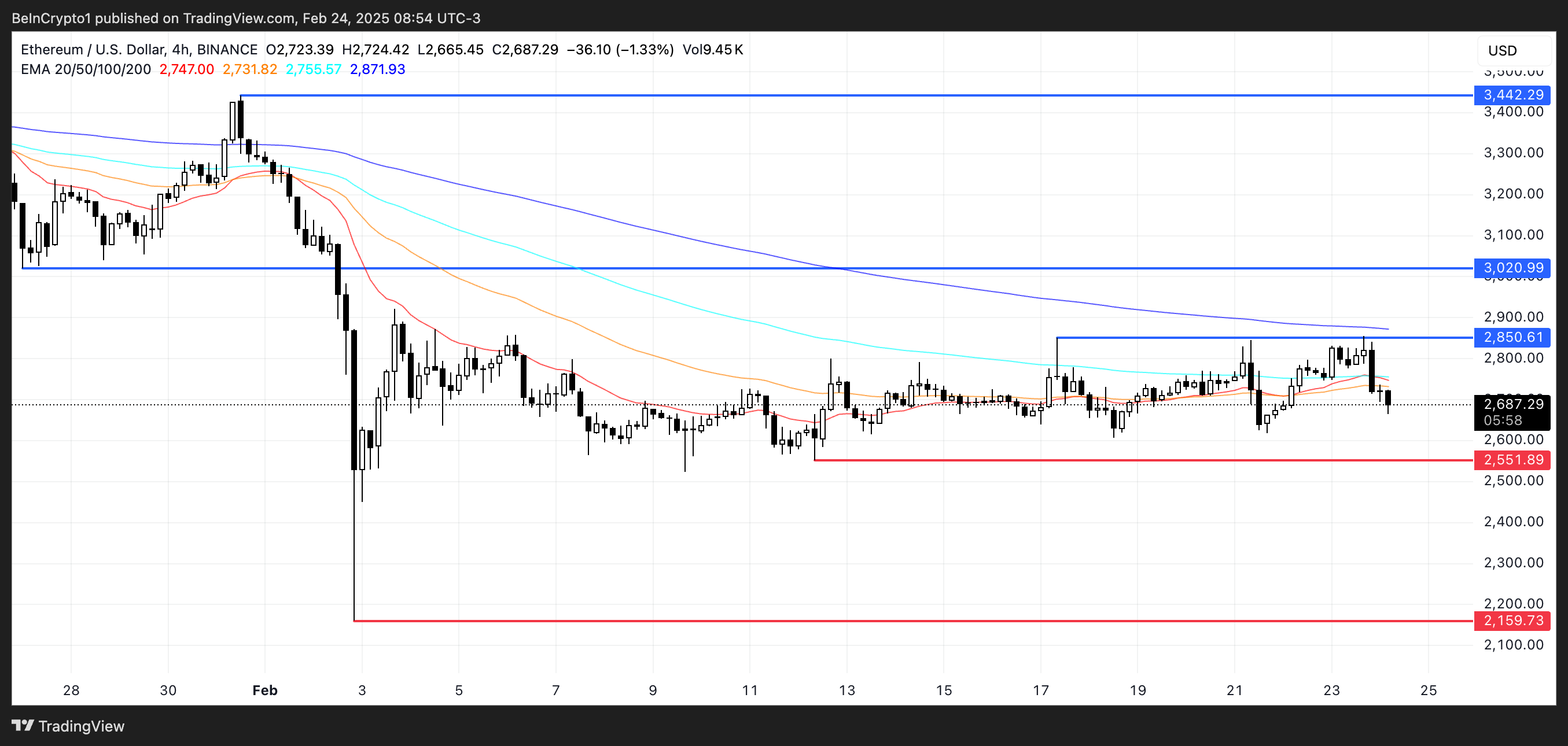Ethereum (ETH) has fallen more than 8% in the last 24 hours and more than 22% in the last 30 days. This reflects the bearish market sentiment. Prices were already in a downtrend, and the Bybit hacking incident has had an additional impact on market sentiment.
Despite Bybit recovering 84% of its reserves, the price of ETH is still under pressure. Ethereum's outlook remains uncertain as it has failed to break above the key $2,850 resistance and $2,900. Bearish indicators continue to dominate.
Bybit, recovering ETH deposits after hacking
Ethereum supply on Bybit dropped sharply after the hacking. It plummeted from 443,000 ETH to 20,250 ETH in a single day.
This sudden drop triggered panic selling pressure not only on ETH but also on BTC and other coins. Market participants were concerned about a liquidity crisis.

The sharp decline in reserves increased uncertainty and sparked widespread speculation about the aftermath. Some users suggested that Bybit may need to buy back ETH to replenish its reserves, which could create strong buying pressure.
Since February 22nd, Bybit's ETH reserves have shown substantial recovery. It increased from 29,000 ETH to 372,000 ETH by February 24th, which is 84% of the pre-hack reserves.
The initial market panic selling appears to be temporary, and the rebound in reserves may attract new buying interest in ETH. However, the price of Ethereum has not yet recovered to pre-hack levels.
Indicators signal no bullish momentum
The Relative Strength Index (RSI) showed Ethereum was in recovery mode after the Bybit hack. It reached 63.2 yesterday, indicating strong buying momentum.
However, it has since dropped sharply and is currently at 43. This represents a significant shift in market sentiment. RSI is a momentum indicator that measures the speed and change of price movements, ranging from 0 to 100.
Generally, an RSI above 70 indicates the asset is overbought, suggesting potential selling pressure. Conversely, an RSI below 30 indicates the asset is oversold, suggesting potential buying opportunities.

The sharp drop in Ethereum's RSI from 63.2 to 43 in a single day indicates a rapid shift from bullishness to bearishness. This significant decline may reflect increased selling pressure or decreased buying interest, potentially due to lingering concerns about the aftermath of the Bybit hack.
With RSI at 43, it is approaching the oversold territory, and a continuation could signal further bearish trends. However, if buying interest resumes, the RSI may stabilize or rebound, indicating potential recovery.
Ethereum's DMI chart shows the ADX has declined from 21.4 to 18.3, indicating a weakening of trend strength. An ADX below 20 suggests a lack of clear momentum, which is consistent with Ethereum's ongoing downtrend.

Meanwhile, the +DI has dropped from 30.4 to 20, indicating a decrease in buying interest, and the -DI has risen from 12.3 to 22.9, suggesting an increase in selling pressure.
With the -DI crossing above the +DI, it confirms the bearish dominance and implies persistent downward pressure on Ethereum's price.
The weakened ADX and rising -DI may signal a continued downtrend unless buying momentum returns. This could lead to further price declines or sideways movement in the short term.
Ethereum price remains below $2,900 for the third week
Ethereum is struggling to break above the $2,850 resistance level. This level has been tested multiple times in recent weeks. If the downtrend continues, ETH may test the $2,551 support, and a failure at that level could lead to a further drop to $2,159.
Notably, Ethereum has not been able to surpass $2,900 since February 2nd, emphasizing the strong resistance in this range.

However, if Bybit fully recovers its pre-hack reserve levels, it could create a positive sentiment for ETH. In this case, the uptrend may retest the $2,850 resistance, and a breakout could push Ethereum's price up to $3,020.
If the momentum continues, the next target would be $3,442. Breaking above $2,900 would be crucial, as ETH has struggled at this level since early February, and a successful breach could lead to a price reversal.







